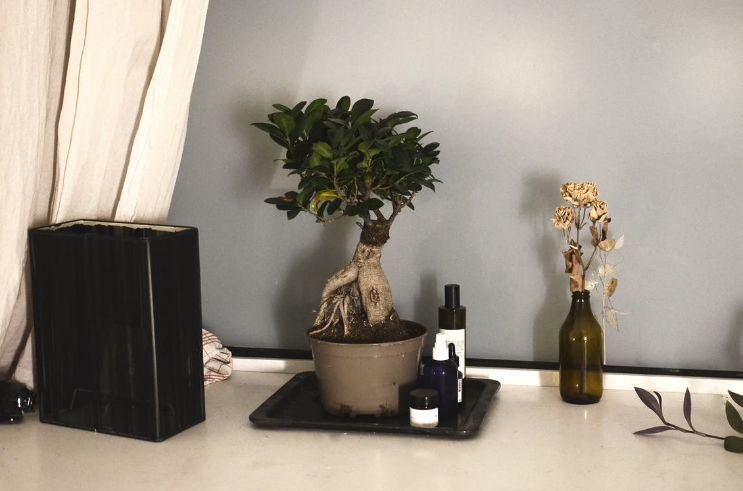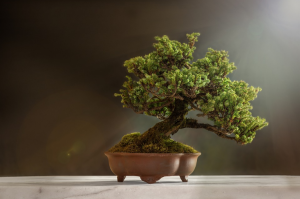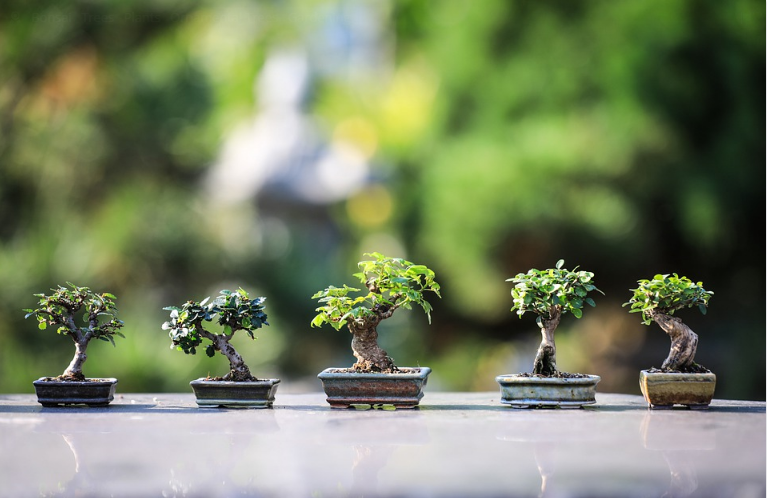People may think that growing trees indoors is impossible, but not with bonsai trees. Unlike other indoor crops, they require regular watering and irregular pruning in spring and foliage. In short, they require the same care and needs as outdoor bonsai, but they are prepared for indoor problems. Indoor lighting is often insufficient to provide indoor bonsai with enough light for photosynthesis, so it is vital to place the tree in a location that receives indirect or direct sunlight through a window. Fluorescent lights or high-intensity grow lights can replace sunlight for some species. Below are the best bonsai species that you can grow at home:
Ficus

Ficus is one of the most common indoor bonsai species, and there are more than 800 species of Ficus bonsai. But there are only two that are excellent for indoor use and are low maintenance enough to be good beginner indoor trees. They are best shaped like a formal or informal upright tree or a weeping banyan. They hurt easily and can’t heal easily on large pruning wounds, so it’s best to grow from smaller trees instead of making packs of massive trees.
Ficus bonsai trees are famous for their milky sap that flows into the ficus when cut or injured. Some are also good at producing small flowers; however, these can only be pollinated by specialized insects. These bonsai species are good at generating aerial root, but they must be near 100% humidity to do so.
Dwarf Umbrella
This type is a hardy and popular citrus houseplant that looks great in a bonsai pot and could be trained as a bonsai in several styles, such as a weeping banyan plant or with its roots exposed on rocks. However, they form exceptionally woody stems, which forces some bonsai collectors to abandon them. They do not respond well to wiring and bending, and directional pruning and topping a younger top will be key ways to shape and form them. They tolerate low light indoors much better than other bonsai species, and they also allow less moisture than many others. If they are healthy, they will survive annual defoliation.
Chinese Elm
 Chinese elms are not solely excellent trees to grow inside the house, but they are also some of the most prosperous trees for beginning bonsai growers. Their quick growth (and incredibly anticipated growth pattern), woody trunk, tiny leaves, and short links make it easy for a rookie to growing a healthy, beautiful bonsai tree, even in the home or workplace. They are easy to grow from cuttings, or if you have mature Chinese elms in your area, they will sprout abundantly from fresh seeds.
Chinese elms are not solely excellent trees to grow inside the house, but they are also some of the most prosperous trees for beginning bonsai growers. Their quick growth (and incredibly anticipated growth pattern), woody trunk, tiny leaves, and short links make it easy for a rookie to growing a healthy, beautiful bonsai tree, even in the home or workplace. They are easy to grow from cuttings, or if you have mature Chinese elms in your area, they will sprout abundantly from fresh seeds.
Snow Rose
The snow rose is a woody trunk tree that generates tiny leaves and attractive, profuse flowers. It is also known as the “tree of a thousand stars.” It is evergreen or semi-evergreen and certainly does well both indoors and outdoors. It can bloom at any time of the year but is most effective from early spring to late fall. They are sensitive to light changes, temperature, and water and may even temporarily lose some of their foliage if stressed by these changes. However, they usually recover quickly. Enhanced is a high maintenance bonsai for beginners and will lose its leaves if it experiences stresses such as temperature fluctuations or routine watering.
Fukien Tea
The Fukien tea tree is famous for its consistency in China, where it originated, can grow over a dozen fingers tall when set in the outside ground. Unfortunately, tons of these mass-produced Fukien tea bonsai trees have a very curved S-shape that is hard to change when the trunk grows too thick to mold with wires. While it is likely to thrive inside the house, it benefits from wasting some time outside in the heat. It doesn’t do well when temperatures drop under 40 degrees. During the winter months, especially in colder climates where the cold environment comes from outside and warms up, resulting in significantly lower temperatures, this species will benefit from a humidity tray.

